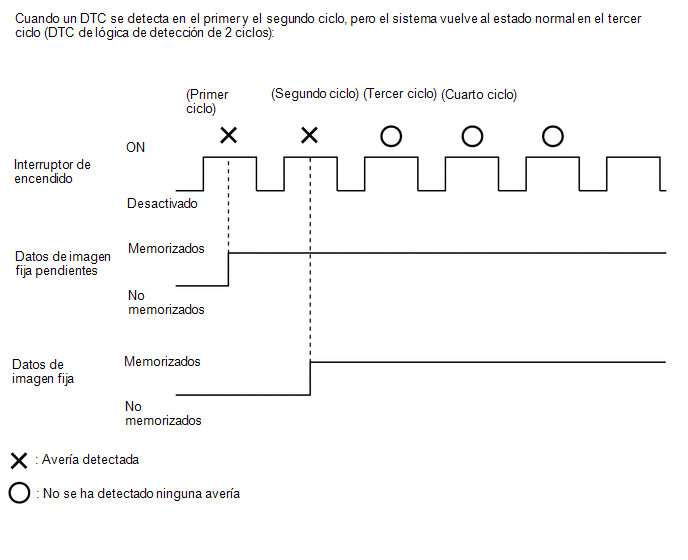Toyota Corolla Manual de Taller: Datos De Imagen Fija
DATOS DE IMAGEN FIJA DESCRIPCIÓN  El ECM registra información sobre las condiciones de conducción y el estado del vehículo como datos de imagen fija en el momento de memorizar un DTC. Cuando se realiza la localización de averías, los datos de imagen fija pueden ser útiles para determinar si el vehículo estaba en movimiento o parado, si el motor estaba caliente o no, si la relación aire/combustible era pobre o rica, así como otros datos registrados en el momento en que se produjo la anomalía. OBSERVACIÓN: Si no es posible reproducir el problema aunque se detecte el DTC, verifique los datos de imagen fija. El ECM registra el estado del motor en forma de datos de imagen fija cada 0.5 segundos. Con el Techstream se pueden comprobar 5 grupos separados de datos de imagen fija.
Puede utilizar estos conjuntos de datos para simular el estado del vehículo en el momento en que se produjo la avería. Los datos pueden ayudarle a identificar la causa de la avería y a decidir si es una anomalía temporal o no. DATOS DE IMAGEN FIJA PENDIENTES OBSERVACIÓN: Los datos de imagen fija pendientes se memorizan cuando se detecta por primera vez un DTC de 2 ciclos durante el primer ciclo. (a) Conecte el Techstream al DLC3. (b) Coloque el interruptor de encendido en posición ON. (c) Encienda el Techstream. (d) Acceda a los siguientes menús: Powertrain / Engine and ECT/Trouble Codes. Powertrain > Engine and ECT > Trouble Codes(e) Seleccione un DTC para ver sus datos de imagen fija pendientes. OBSERVACIÓN:

 LISTA DE LOS DATOS DE IMAGEN FIJA Powertrain > Engine and ECT
|
Ver más:
Toyota Corolla Manual de Taller > Sistema De Control De La Velocidad De Crucero De Radar DinÁmico: Prueba En Carretera
PRUEBA EN CARRETERA CONFIRMACIÓN DE LOS SÍNTOMAS DEL PROBLEMA OBSERVACIÓN: El sistema de control de la velocidad de crucero de radar dinámico dispone de 2 modos de control: modo de control de velocidad constante y modo de control de la distancia entre vehículos. El modo de control de la distanc ...


